#architect Daniel Libeskind
Explore tagged Tumblr posts
Text
Lighting of the tree at Rockefeller Center in New York City
© Thorney Lieberman
Getty Images

The Rockefeller Center Christmas tree draws throngs of people to Midtown each year to celebrate the holidays. The tradition started in the 1930s, when construction workers at Rockefeller Center pooled their money to buy a tree. Officials at Rockefeller Center later formalized the event, especially today’s lighting ceremony, which will be attended by thousands of onlookers. Each year’s tree is selected by the head gardener at Rockefeller Center and topped with a huge star adorned with Swarovski crystals. This year, the tree introduces a new star designed by architect Daniel Libeskind—it weighs 900 pounds, is more than 9 feet in diameter, and features 70 spikes and three million crystals outfitted with LED lights to emit rays in all directions. In January, the tree is milled, and the lumber donated to Habitat for Humanity. We think Santa would approve.
#thorney lieberman#getty images#Lighting of the tree#Rockefeller Center in New York City#The tradition started in the 1930s#adorned with Swarovski crystals#architect Daniel Libeskind#artists photographie#art#original photographer#original art#photographer#art style#black and white photography#natural colours#urban photography#american art#photo color#art color#de tot#fotos art#xpuigc#xpuigc bloc
8 notes
·
View notes
Text
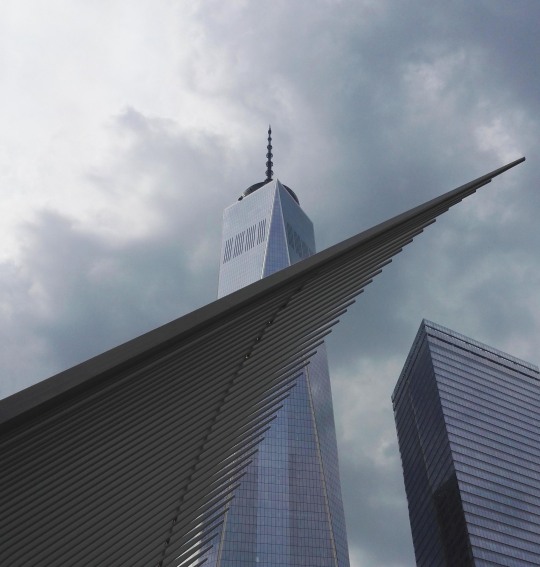
SANTIAGO CALATRAVA, The Oculus (aka World Trade Center Transportation Hub), opened 2016, New York, NY. On the background One World Trade Center by David Childs, Skidmore, Owings and Merrill och Daniel Libeskind, 2006-2014.
Source: Instagram
#design#architecture#architect#concrete#modernism#modernist architecture#photography#architecture photography#minimalism#art#modern art#contemporary art#contemporary photography#american modernism#new york#new york city#interior architecture#modern architecture#daniel libeskind#skyscraper#santiago calatrava#calatrava#oculus#sculpture#modern sculpture#abstract sculpture
87 notes
·
View notes
Text

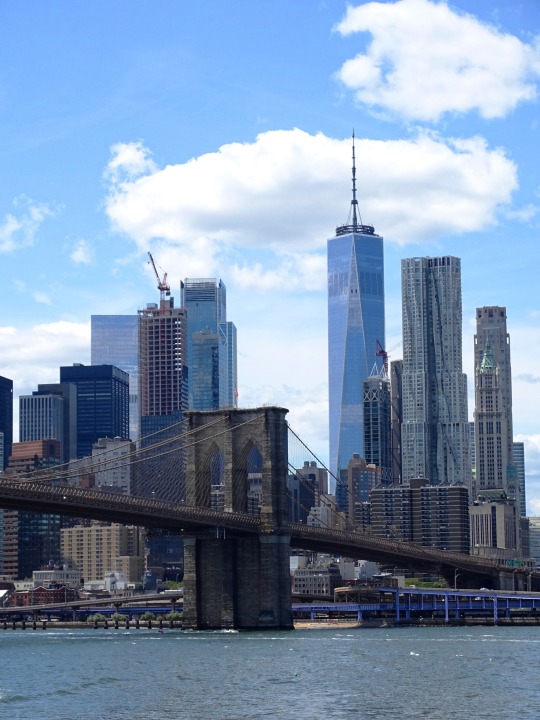


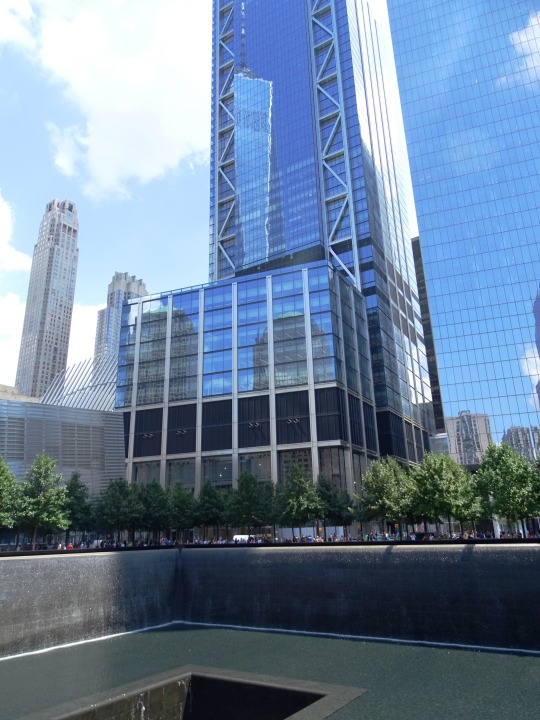
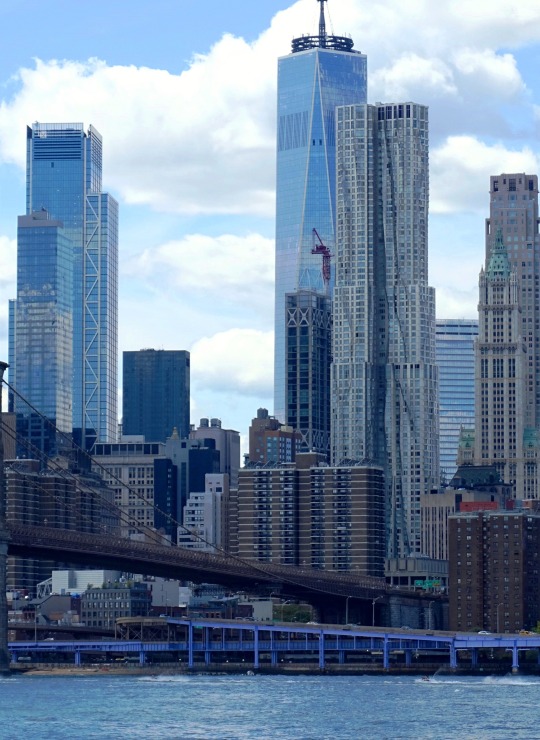
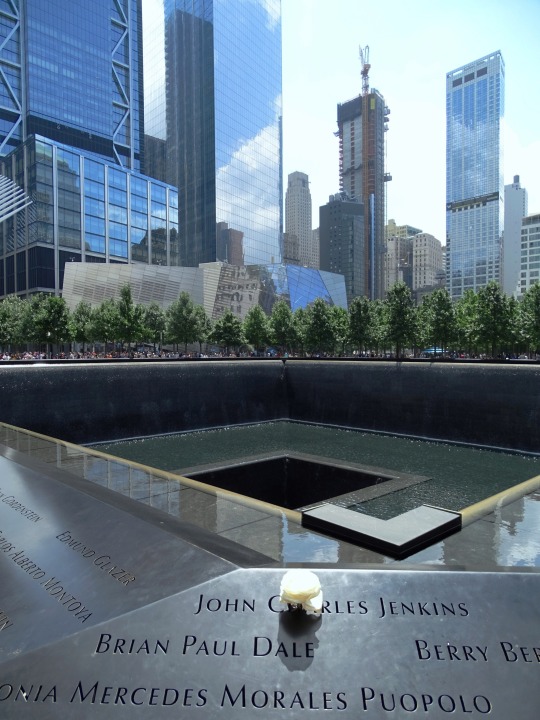
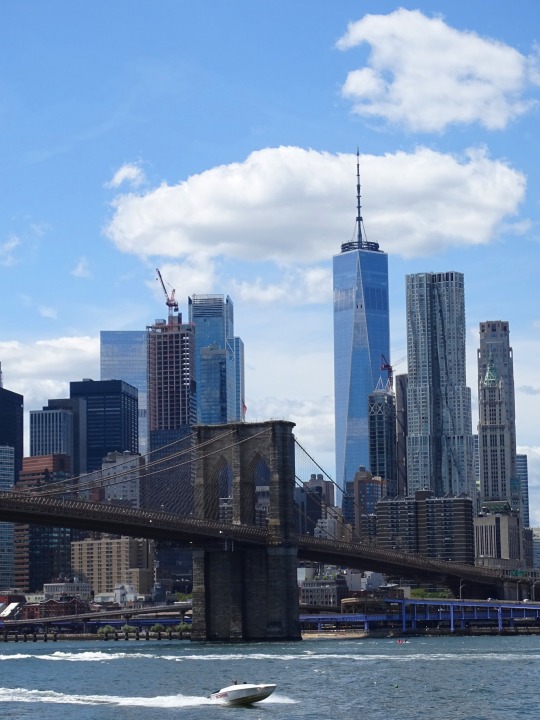
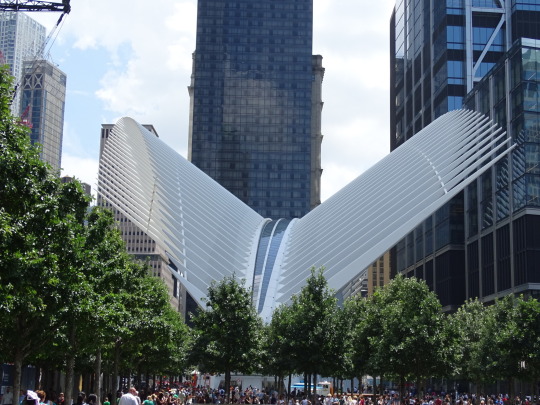
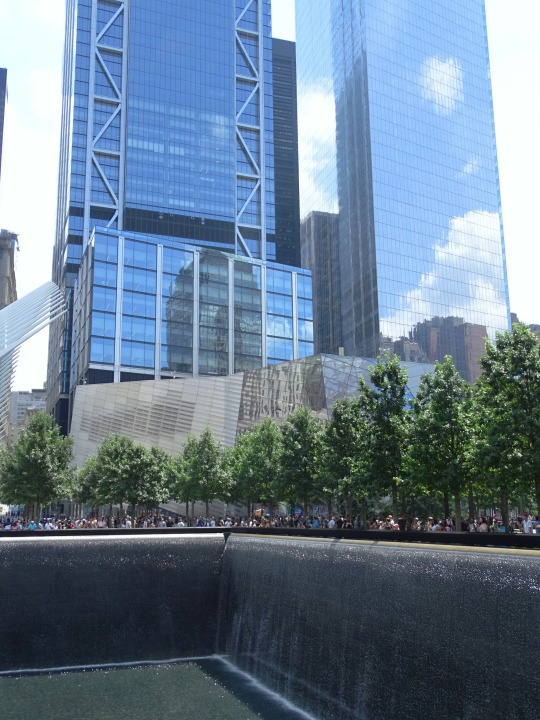
3 World Trade Center officially opened on June 11, 2018.
#Memorial’s Plaza#National September 11 Memorial & Museum#Lower Manhattan#Reflecting Absence by Michael Arad and Peter Walker#USA#3 World Trade Center#3 WTC#175 Greenwich Street#AAI Architects P.C.#opened#11 June 2018#anniversary#US history#One World Trade Center#David Childs#reflection#Daniel Libeskind#East River#Brooklyn Bridge#summer 2018#2019#tourist attraction#landmark#skyscraper#travel#vacation#original photography#cityscape#architecture
2 notes
·
View notes
Text

Musée juif de Berlin, Allemagne (Daniel Libeskind 2001). - source Sameh Shawky via Great Architects (Frank Lloyd Wright - Le Corbusier - Antoni Gaudí).
12 notes
·
View notes
Text

Office and commercial building Kö Bogen designed by architect Daniel Libeskind, Düsseldorf, North Rhine-Westphalia, Germany
8 notes
·
View notes
Text
(JTA) — In Pittsburgh, “10/27” has become a shorthand for the massacre, on Oct. 27, 2018, of 11 Jews as they gathered for worship at the Tree of Life synagogue complex in the city’s Squirrel Hill neighborhood. The nonprofit that is coordinating this year’s events marking the five-year anniversary of the shooting is known as the 10.27 Healing Partnership.
But that anniversary arrives as the Jewish world staggers under the weight of another date — Oct. 7, 2023 — when Hamas launched an attack that killed 1,400 Israelis in a day and pulled Israel into a war aimed at the group’s eradication.
For Rabbi Jeffrey Myers, rabbi of Tree of Life/Or L’Simcha Congregation and a survivor of the attack, the two events defy easy comparison. And yet, he said in an interview this week, the attacks in Israel compounded the trauma in a Pittsburgh community that was hoping this anniversary — which followed a guilty verdict and death sentence for the gunman in a trial that ended in August — would bring some degree of closure for the survivors, grieving relatives and the community at large.
Myers, in his first pulpit as rabbi after serving for years as a cantor, had come to Pittsburgh just a year before the shooting to lead a Conservative synagogue in a space shared with two other congregations, New Light and Dor Hadash.
He was just beginning Shabbat services that Saturday in 2018 when he heard a loud bang. When he realized it was a gunshot, he pushed three congregants into a supply closet and told others to drop to the floor. He managed to call 911 from up in the choir loft, and, seeing there was nothing else he could do for others in the building, barricaded himself in a bathroom.
By the time police subdued the gunman, he had killed 11 worshippers: Joyce Fienberg, Richard Gottfried, Rose Mallinger, Jerry Rabinowitz, Cecil Rosenthal, David Rosenthal, Bernice Simon, Sylvan Simon, Dan Stein, Irving Younger and Melvin Wax.
Myers became the public face of the worst antisemitic attack in U.S. history, and a spokesman for the commemorative efforts that have followed since. While the congregations worship elsewhere, the architect Daniel Libeskind has been hired to design a renovated complex that will eventually house a sanctuary, a museum, a memorial to the victims and a center for fighting antisemitism. (Dor Hadash and New Light plan to stay in their new locations.)
A month of anniversary events will culminate Sunday, Oct. 27, in Pittsburgh’s Schenley Park.
Myers and I spoke as Israelis continued to hold funerals and shivas for their dead and clamored for the release of the more than 200 people being held hostage by Hamas. We spoke about the impulse toward vengeance, his approach to fighting antisemitism and how to promote a positive vision of Judaism in a climate of fear.
“Despite all the ugliness I still have hope,” he told me. “I’m a hopeful person, despite all I’ve been through. I’m convinced there are more good people in the world than not. We just need that silent majority to become a vocal majority. But I have hope that we are capable of better.”
Our conversation was edited for length and clarity.
JTA: The fifth anniversary of the shooting is coinciding with these terrible, terrible events in Israel. I think in an interview you used the term “retraumatizing” to describe its effects on you and your community.
Myers: I don’t think the word necessarily exists in the English language, but I think it’s just the best descriptor of the whole concept of compound trauma for one thing and you have the next one piled right on top of it. It’s the same physical and emotional feelings. Except hopefully, this time, having been through it, you’ve developed the tools necessary to be able to make it manageable.
What are some of those tools? Because I know right now people are just struggling, whether they’ve lost family, or friends of friends, or just processing the loss of so many Jews in a single day.
I have to say that I’m not a mental health professional. So I always encourage people to reach out to the right professionals. The things I recommend to people is, first off, to recognize that you do have those symptoms again, to be mindful of your body. What is your body telling you? Finding time for self-care is so critically important. Figure out some way to get sufficient rest. That’s not always easy because the brain doesn’t want to shut off. Make sure you eat, make sure you stay well hydrated, buy time every day for a timeout to see if there’s space to do something you’d like to do. For example, at this time of year for the Northeast, if you look for leaves, set aside an hour if you can take a drive. Just bring a chair and just take in the beauty of the leaves. When you have a lunch break, make it a lunch break.
Have you taken your own advice? What have you found particularly helpful over these five years?
All of those things. You know, put down the electronic leash and just don’t use it. Take a break. That’s what voicemail is for. And just stepping away from demands and just easing off the proverbial gas pedal for a little bit. Take time out for myself. Because I’m no good to my congregation at large if I’m not my optimum self.
You described the years waiting for the start of the trial as being “stuck in neutral.” You wrote, “It was a challenge to move forward with the looming specter of a murder trial.” Now that there is a verdict and a sentence, are you seeing a way forward?
The best way to describe it is the Greek myth of Sisyphus [doomed to roll a boulder up a hill without ever reaching the top]. And the most important thing is just get out of the way. When it comes running back down the hill, make sure it doesn’t run you over. The reminders are constant: Tree of Life is mentioned every day somewhere in print, every single day. Because we are the poster child for antisemitism in the United States.
And when Tree of Life reopens it will be more than a synagogue — it will be a symbol. How do you lead a community in that circumstance?
Just the fact that it opens will be an important statement to the entire Jewish community, the United States and beyond that we didn’t let evil win. It took a lot longer than we wanted [to rebuild]. We want to be in our building yesterday. But that being said, it will be a powerful symbol. There’s the beauty of Daniel Libeskind’s design, but to me more importantly is what emanates from the building in terms of who we are. What are the things that we do? Where are we focused?
Your community has launched a national nonprofit organization dedicated to uprooting antisemitism. What will make its approach different from other organizations working in this sphere?
It’s about identifying one’s niche. You’ve got these two massive legacy institutions, the Anti-Defamation League and the American Jewish Committee, and all of these popup organizations doing also wonderful work. But frankly, there is a lot of duplication going on in organizations. What can we add to the conversation? We have the site. We have the story. We have the testimonies of survivors. That’s impactful. And to that end, that’s something that we can use carefully with the school children to teach them the story, not just of antisemitism but that it doesn’t end with the Jews. We can have schoolchildren come to us for a fulsome experience, not to leave depressed but to be able to leave saying, “What’s an action that we can take back to our community in our own way to further the goals of Tree of Life, to eliminate antisemitism, and to have respect for all of humanity?” With all due respect to all of these other wonderful organizations, they don’t have the capacity to do that in the way that we do.
I think some people might look at Tree of Life and come to another conclusion: That Jews aren’t safe, and all the money that synagogues have had to spend on security in recent years contradicts the message — and it is right in the name of the synagogue — that Judaism is life-affirming. Do you worry about that?
Really good question. I think of that when I go to other houses of worship, and recognize so many that don’t have security, and think that they’re immune from bad actors who will physically do terrible things for unexpected reasons. But whatever the reasons are, the sanctuary that existed in America’s houses of worship no longer exists. It’s a fiction. Our responsibility is to provide that balance between being open and welcoming, and yet safe and secure. That’s a really hard balance.
And that’s why we’re working with professionals to create the right balance, so that I don’t feel like I’m going through TSA to get into Tree of Life, but that people know we’re mindful that these are the realities. One shooter demanded a wholesale change across the entire American landscape for synagogues, and that’s the reality. So we have to be a model of how can you do that in an intelligent, non-threatening way.
But are there people who come to you and say, “Rabbi, I am trying to have a positive Jewish experience in my life, but I see what happened here. I see what’s happening in Israel, and I can’t get past the fear and towards something” (again, I’ll use that term) “life-affirming”? How do you respond?
It’s not fictitious. There are people afraid to come. That’s another reason to have livestreaming. We can say, “We care about you. And we’re going to do our best to use technology to provide ways for you to stay connected in a way that you feel safe. And we’re hopeful that as time goes on you can find ways to [overcome your fears].” But that’s what it means to be a domestic terror victim. And to that extent, I would submit that the entire Jewish community in the United States are victims of domestic terrorism on an ongoing basis.
Part of my answer has regularly been that the more antisemitism they do, the more Jewish we must do. There’s a vibrancy through community. No matter what the setting may be, whether it’s a joyous occasion, whether it’s a sad occasion, there’s something about the energy that you get when you’re in community. We recognize that as we began to come out of COVID. What’s the first thing people did? People missed hugging, that interpersonal connection that being on a screen does not provide. So there are ways to provide for safe gatherings, to just be in community with each other and those are important. And those we continue to do, whether it’s religious services, which is the primary function of a synagogue, or social gatherings, cultural gatherings, educational gatherings. Those are the things that we must continue to do and do even more of because if we don’t, then we give into that terrorism, and then the terrorists win. And I’m not doing that on my watch.
I want to take you back to the trial. I think a lot of the reporting talked about how the guilty verdict and the death penalty would bring “closure.” Did you experience it that way?
There’s no one answer, frankly. A verdict can’t bring back your loved ones. So I don’t know if closure is the right word. Perhaps the best way to describe it is that a chapter ended. We flipped the page in this book that we’re writing. And, as has always been the case, the next page is totally blank. We’re now writing that next chapter. Now we can begin to move forward and really begin to explore what healing looks like. Because I don’t know we can really get “closure” in the way that I think people would want.
Right, you certainly can’t bring the loved ones back or erase what you experienced that day.
The reminders are there at any given moment. Your brain will replay the video that seared in your head of the day. And it’s not just say, Oct. 27 at precisely 9:54 a.m. when the video clicks on in my head every year. It can be at any given moment. Sometimes it’ll just start to play and you can’t shut it off. And that’s what it means to be a survivor. You have to learn to live with those things. I’ve got to go with it and let it play and get through it.
I know so many people right now who are thinking about vengeance, because 1,400 Israelis are gone in a moment as the result of acts of unbelievable brutality. And I think it’d be natural for anyone to want to seek vengeance. Have the last five years made you think about vengeance and both its uses and its abuses?
When we try to seek vengeance, we lower ourselves to the same level as the perpetrator. And then we’re no better than the perpetrator. And it’s not a holier-than-thou attitude — it’s more that I become a victim in another sense, because it changes the biochemistry of who I am. And I refuse to let that happen. I’m not going to let the perpetrator make me then become another victim. So I recognize the mission that’s been foisted upon me because of this. And that’s where I focus my attention. Vengeance has never entered into it. I can see why people could be prone to that. I totally understand. It’s a natural response, to give yourself the space to cope with the horror, the anger, all of the emotions of it and to rush to that sort of judgment with potential regret later.
But it saddens me when I see people who respond in a comparable dangerous, violent way, because that doesn’t solve anything. Just as one mitzvah causes another mitzvah, one sin causes another sin. The initial feeling might be one of delight, but give it a little time further and you’ll discover there’s more regret than there was delight for going down that path. So I made the choice long ago. No, I’m not going to carry that anger with me, because it’ll overwhelm you and it can destroy you and I’m not going to let that happen to me.
I saw a tweet, and it’s so different it’s almost hard to compare the two, but someone said that what happened in Israel on Oct. 7 was like Tree of Life times 100. Have you been talking to folks in Israel or people in your congregation about how to process what just happened, and do you worry about the wrong messages that might come out of a traumatic event like the Hamas attacks — perhaps calls for vengeance?
When we try to name something that’s unnamable and unexplainable, we frequently try to find the right comparison. Which is why you’ve heard language such as the Hamas attacks being the single greatest loss of Jewish life since the Holocaust, to try to put it in some term that people can understand. It’s very easy for us to expand on that and just [hate] all Muslims and all Arabs. And I’ve been praying to God: “Please don’t let me go down that path.”
I don’t think what happened in Israel could be compared to Tree of Life. Yes, they’re both about the threat of antisemitism. But [what happened in Israel] is far more than just that. You’re talking about an existential threat to the existence of a country.
As a rabbi, as a Jew, I pray that God should inspire and impart divine wisdom upon all those in the right leadership capacities in Israel, to make good, smart choices. That’s far beyond my skill set to figure out what those would be.
Anniversaries are meaningful but also somewhat arbitrary. Do you worry that the lessons or memories of what happened on Oct. 27 will fade over time or, as we’ve seen in the past few weeks, be overshadowed or subsumed by tragedies that seem even bigger or just more recent?
The past two years I’ve been privileged to participate in the Flight 93 memorial service on 9/11, because the flight 93 memorial is in Shanksville, which is an hour east of Pittsburgh. Over time, the observance has lessened and lessened and lessened. That’s just human nature. It’s how we cope with a trauma like that. I expect the same thing to happen when it comes to the 10/27 commemoration. Those who hold it most dear will continue to observe it in whatever personal ways they can, but there’s a gradual lessening of observance. It saddens me, but it’s what I would expect, having seen it in so many other circumstances.
You experienced something perhaps no other rabbi has had to go through in the modern era. What don’t outsiders understand about the shooting or its impact on you personally, or as a community? What would you want every synagogue rabbi or synagogue president to know based on your experience?
Be prepared. Take those trainings seriously. Because you may be called upon to save a life. Be direct with your congregants in terms of how they need to respond to this. God willing, you never need to use CPR, but you take the course because one day perhaps you might.
Because, as Rabbi Marvin Hier of the Simon Wiesenthal Center said to me, if [Nazi hunter] Simon Wiesenthal was alive today, his response to the shooting at Tree of Life would have been, “What took so long?” Because that’s the nature of America. We have something like 12 mass shootings per week in the United States.
What do you think is the most proper, the most appropriate way for people to take a pause and remember an event like 10/27?
It’s complex in a different way. For the Pittsburgh Jewish community, it’s the only event that’s observed twice: a solar date [on the standard calendar] and a lunar date [on the Jewish calendar]. There’s a heaviness to it because we get through the public commemoration, then there’s the yahrzeit [22 Heshvan, which fell this year on Oct. 22]. The public commemoration is really important because it’s not solely about an attack upon three congregations in one building. For so many Pittsburghers, it was an attack upon Pittsburgh. So many took it personally. It’s about all of Pittsburgh and how we come together.
But in the end I think our Jewish tradition is just so beautiful and powerful: We gather, we pray together, we say Kaddish together. But when the entire community says Kaddish together, and you get to the lines where the congregation usually says “amen,” there’s nobody to say “amen” because we’re all mourners. To me that’s that incredible.
8 notes
·
View notes
Text
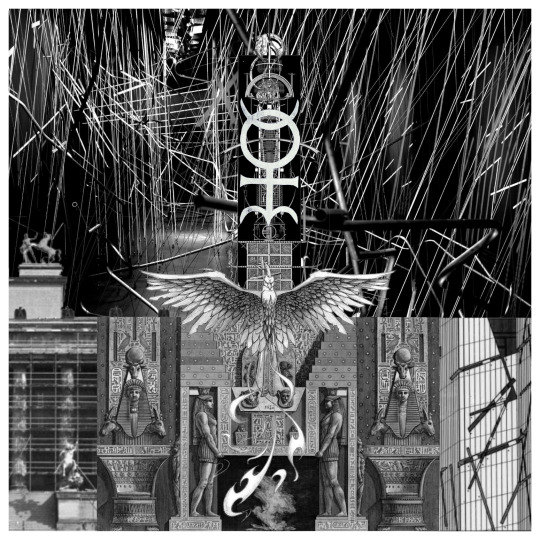
"Architectural Alchemy: The Phoenix's Flight in Radical Design"

Imagine a realm where buildings are not mere structures but living entities, pulsating with dynamic energy and pushing the limits of our imagination. This realm is governed by the phoenix, an immortal symbol echoing through Greek, Egyptian, and Persian mythologies. In the phoenix's fiery rebirth from its own ashes, we find the metaphor for radical architecture – the perpetual renewal and reinvention of the built environment.
Let's embark on a journey through iconic structures that embody this radical spirit. The Altes Museum in Berlin, a neoclassical masterpiece, stands tall with its monumental pillars and rotunda, akin to the majestic Pantheon. Here, architecture becomes a sanctuary for art and science, a testament to the grandeur that arises from pushing traditional boundaries.
Shift your gaze to the Jewish Museum Berlin, a modern marvel designed by the visionary architect Daniel Libeskind. This architectural narrative unfolds the history of German-Jewish heritage, a poignant reminder that radicalism can also be a bridge between past and present, a dialogue between eras.
Lebbeus Woods, the maverick architect, envisions cities as dynamic systems, challenging the very fabric of urban structures. His "System Wien" disrupts the traditional landscape of Vienna, illustrating that radicalism isn't about discarding the past but transforming it into a new, vibrant reality.
Delve into the synergy of complex systems, from thermodynamics to human activity, shaping the energy of cities. Architecture, much like the phoenix, rises from the fire – fueled by new ideas, perspectives, and the ever-present need for maintenance.
As the dialogue between Berlin and Vienna unfolds, narrated by the timeless city of London, we witness the alchemical magic of John Dee's Monas Hieroglyphica. It symbolizes a harmonious blend of tradition and innovation, a perfect metaphor for the radical architect's quest to unveil the secrets of our Western world.
In this narrative, radical architecture isn't just about defying norms; it's a celebration of perpetual reinvention, a journey where the phoenix soars, and cities transform. It's a call to embrace the importance of radicalism in architecture, for in its flames, we find the essence of timeless design and a bridge to a visionary future.
#RadicalArchitecture#ArchitecturalInnovation#DesignRevolution#PhoenixRebirth#ArchitecturalDialogue#EternalDesigns
3 notes
·
View notes
Text

Red sticks aglow on Dublin's Grand Canal Square.
Dublin's Docklands underwent significant, almost complete redevelopment in the 2000s with the biggest names in the tech industry still building and locating in the area today.
Here in Grand Canal Square the public realm was designed by landscape architect Martha Schwartz and the choice of red paving blocks and these tall red glow sticks were designed deliberately to give a red carpet effect coming from Daniel Libeskind's 2,000-seater theatre.
#architecture#vsco#panoramic ireland#ireland#landscape#irish#photographers on tumblr#photography#travel#dublin#landscape architecture#glow sticks#urban design
15 notes
·
View notes
Text



Micromega Drawings, 1979
by Architect Daniel Libeskind
15 notes
·
View notes
Photo


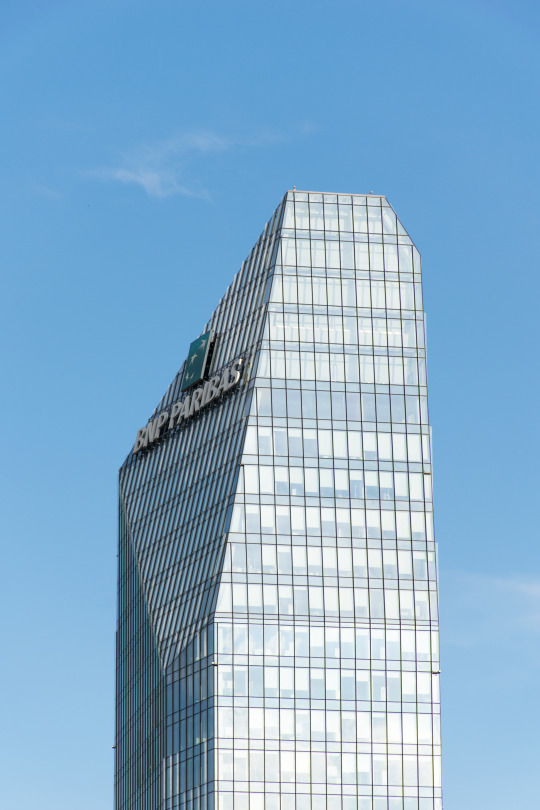


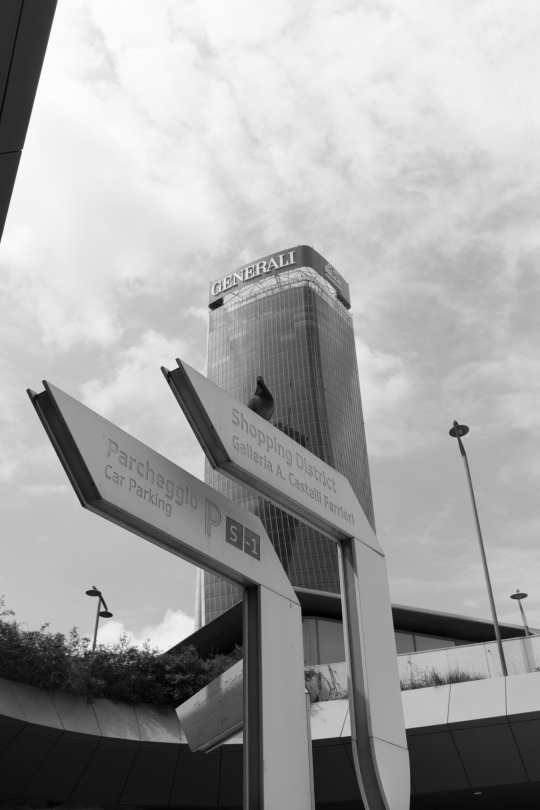

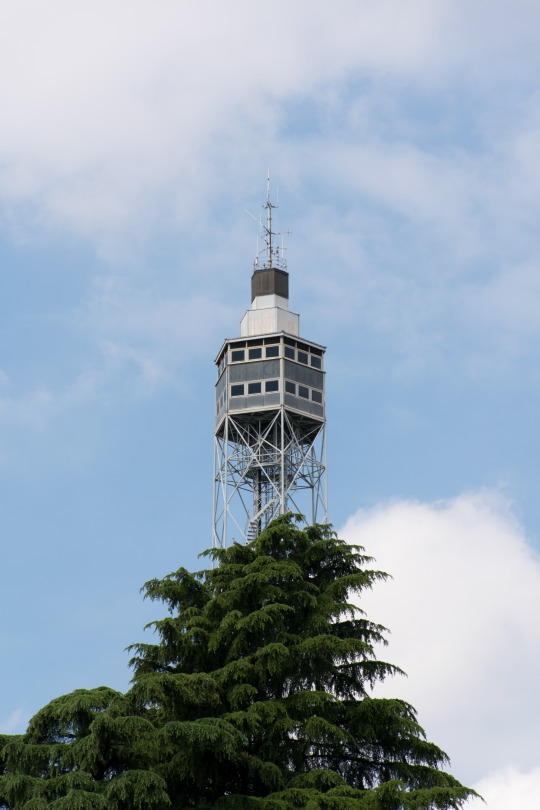
Architecture in Milan part I
Torre Solaria (2014, Arquitectonica)
Bosco Verticale (2009-2014, Stefano Boeri)
Torre Diamante (2010-2012, Kohn Pedersen Fox)
Torre Gioia 22 (2018-2021, Gregg Jones)
Torre Libeskind (2016-2021, Studio Daniel Libeskind)
Torre Generali (2014-2017, Zaha Hadid Architects)
Torre UniCredit (2009-2012, César Pelli)
Torre Branca (1933, Gio Ponti)
#milan#architecture#building#sky#skyscraper#modern#glass#color#tower#boeri#libeskind#zaha hadid#gio ponti#branca#pelli#summer#garden#italy#b.a.m.
5 notes
·
View notes
Photo

A stunning blend of fantasy and realism, this illustrated depiction by Adam Elsheimer showcases a brutalist house carved into the side of the Giant Crystal Cave. The translucent gypsum beams and perfectly faceted blocks create a mesmerizing architectural marvel. On the other hand, we have a modern Catholic church on a red sky alien planet, designed by Daniel Libeskind and Morphosis Architects. This 3D render architecture concept pushes the boundaries of imagination. Let these designs transport you to a world where creativity has no limits. 🌌✨ #DesignMondays #ArchitectureInspiration #BrutalistHouse #FantasyRealism #GypsumBeams #ModernCatholicChurch #AlienPlanet #ArchitectureDesign #InspireCreativity #LimitlessPossibilities
#DesignMondays#ArchitectureInspiration#BrutalistHouse#FantasyRealism#GypsumBeams#ModernCatholicChurch#AlienPlanet#ArchitectureDesign#InspireCreativity#LimitlessPossibilities
0 notes
Photo
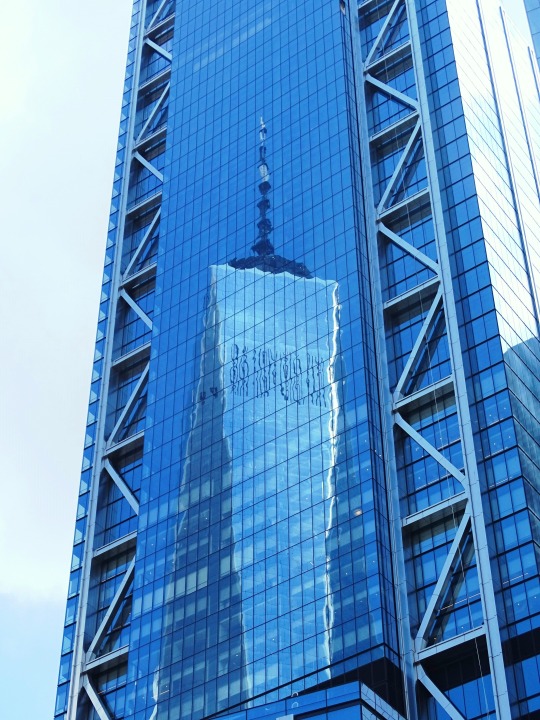
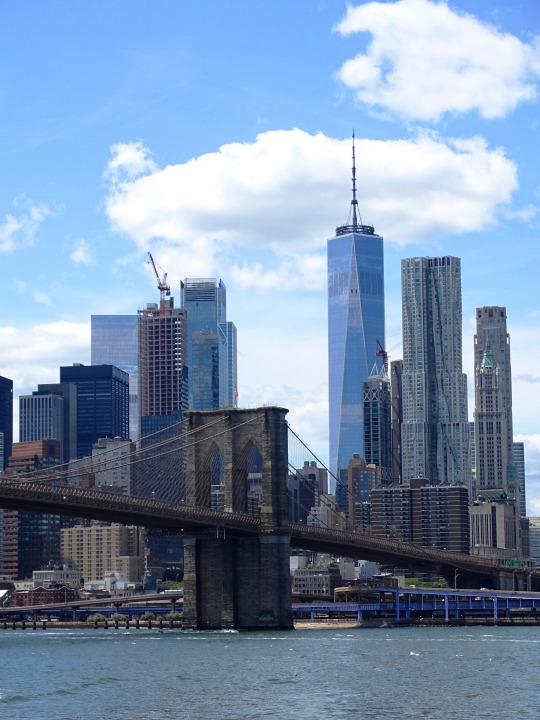

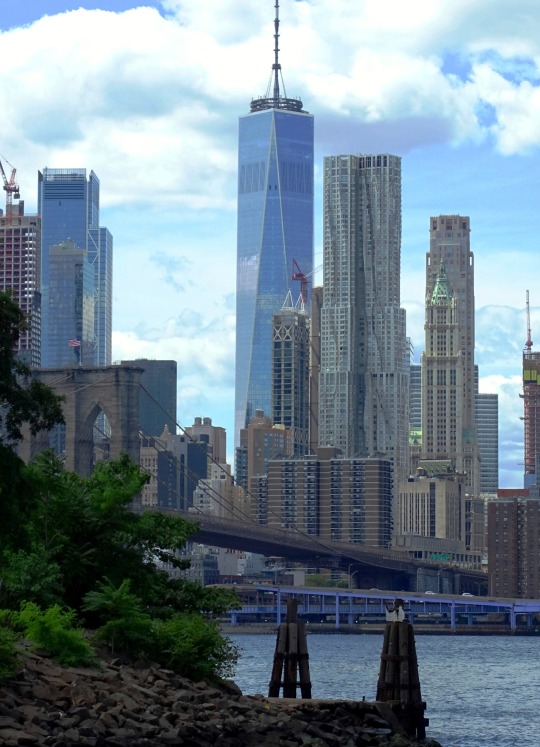
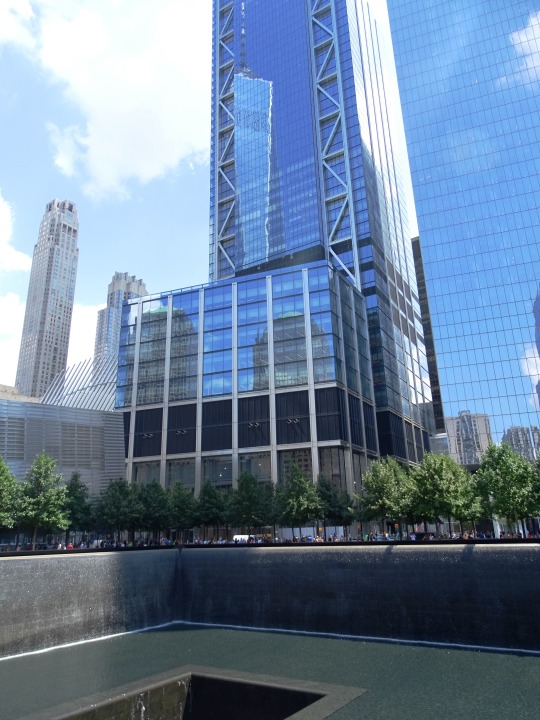


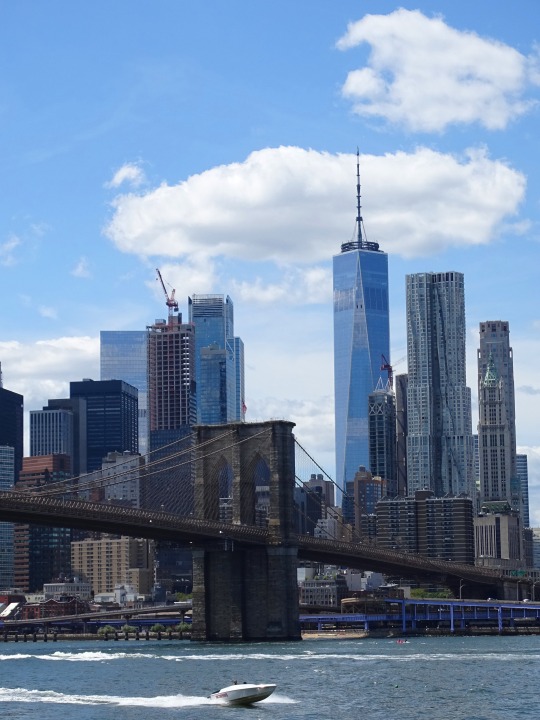
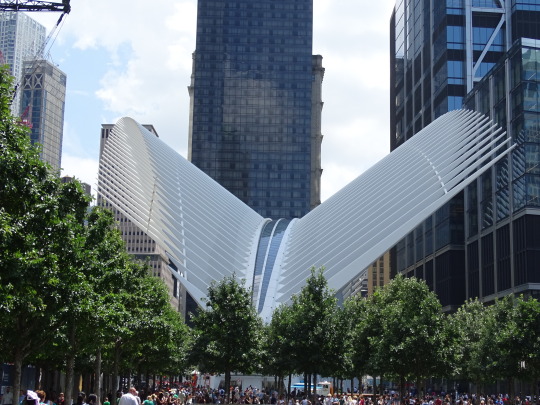

3 World Trade Center officially opened on June 11, 2018.
#Memorial’s Plaza#National September 11 Memorial & Museum#Lower Manhattan#Reflecting Absence by Michael Arad and Peter Walker#USA#3 World Trade Center#3 WTC#175 Greenwich Street#AAI Architects P.C.#opened#11 June 2018#5th anniversary#US history#One World Trade Center#David Childs#reflection#Daniel Libeskind#East River#Brooklyn Bridge#summer 2018#2019#tourist attraction#landmark#skyscraper#travel#vacation#original photography
2 notes
·
View notes
Text
Contemporary Jewish Museum - Cityseeker
Established in 1984, the Contemporary Jewish Museum presents a scientific and artistic program that explores the Jewish spirit and imagination. The museum offers contemporary views and Jewish perspectives on culture, history and art, with programs that reflect global ideas that are connected to the past and are still relevant to everyone today. World renowned architect Daniel Libeskind was commissioned for the project. The 63,000 square foot museum provides a welcoming space for people of all backgrounds to meet, party and discuss all kinds of art forms.
0 notes
Text
(cet été, j’ai passé du temps à Berlin et Varsovie et j’ai senti l’Histoire vitrifiée qu’évoque Masha Gessen dans ce texte publié par The New-Yorker)


The Memorial to the Murdered Jews of Europe, in Berlin, photographed in 2013.Photograph by Paolo Pellegrin / Magnum
Berlin never stops reminding you of what happened there. Several museums examine totalitarianism and the Holocaust; the Memorial to the Murdered Jews of Europe takes up an entire city block. In a sense, though, these larger structures are the least of it. The memorials that sneak up on you—the monument to burned books, which is literally underground, and the thousands of Stolpersteine, or “stumbling stones,” built into sidewalks to commemorate individual Jews, Sinti, Roma, homosexuals, mentally ill people, and others murdered by the Nazis—reveal the pervasiveness of the evils once committed in this place. In early November, when I was walking to a friend’s house in the city, I happened upon the information stand that marks the site of Hitler’s bunker. I had done so many times before. It looks like a neighborhood bulletin board, but it tells the story of the Führer’s final days.
In the late nineteen-nineties and early two-thousands, when many of these memorials were conceived and installed, I visited Berlin often. It was exhilarating to watch memory culture take shape. Here was a country, or at least a city, that was doing what most cultures cannot: looking at its own crimes, its own worst self. But, at some point, the effort began to feel static, glassed in, as though it were an effort not only to remember history but also to insure that only this particular history is remembered—and only in this way. This is true in the physical, visual sense. Many of the memorials use glass: the Reichstag, a building nearly destroyed during the Nazi era and rebuilt half a century later, is now topped by a glass dome; the burned-books memorial lives under glass; glass partitions and glass panes put order to the stunning, once haphazard collection called “Topography of Terror.” As Candice Breitz, a South African Jewish artist who lives in Berlin, told me, “The good intentions that came into play in the nineteen-eighties have, too often, solidified into dogma.”
Among the few spaces where memory representation is not set in apparent permanence are a couple of the galleries in the new building of the Jewish Museum, which was completed in 1999. When I visited in early November, a gallery on the ground floor was showing a video installation called “Rehearsing the Spectacle of Spectres.” The video was set in Kibbutz Be’eri, the community where, on October 7th, Hamas killed more than ninety people—almost one in ten residents—during its attack on Israel, which ultimately claimed more than twelve hundred lives. In the video, Be’eri residents take turns reciting the lines of a poem by one of the community’s members, the poet Anadad Eldan: “. . . from the swamp between the ribs / she surfaced who had submerged in you / and you are constrained not shouting / hunting for the forms that scamper outside.” The video, by the Berlin-based Israeli artists Nir Evron and Omer Krieger, was completed nine years ago. It begins with an aerial view of the area, the Gaza Strip visible, then slowly zooms in on the houses of the kibbutz, some of which looked like bunkers. I am not sure what the artists and the poet had initially meant to convey; now the installation looked like a work of mourning for Be’eri. (Eldan, who is nearly a hundred years old, survived the Hamas attack.)
Down the hallway was one of the spaces that the architect Daniel Libeskind, who designed the museum, called “voids”—shafts of air that pierce the building, symbolizing the absence of Jews in Germany through generations. There, an installation by the Israeli artist Menashe Kadishman, titled “Fallen Leaves,” consists of more than ten thousand rounds of iron with eyes and mouths cut into them, like casts of children’s drawings of screaming faces. When you walk on the faces, they clank, like shackles, or like the bolt handle of a rifle. Kadishman dedicated the work to victims of the Holocaust and other innocent victims of war and violence. I don’t know what Kadishman, who died in 2015, would have said about the current conflict. But, after I walked from the haunting video of Kibbutz Be’eri to the clanking iron faces, I thought of the thousands of residents of Gaza killed in retaliation for the lives of Jews killed by Hamas. Then I thought that, if I were to state this publicly in Germany, I might get in trouble.

Metal faces fill the floor of the “Fallen Leaves” exhibition room at the Jewish Museum, in Berlin.Photograph from Shutterstock
On November 9th, to mark the eighty-fifth anniversary of Kristallnacht, a Star of David and the phrase “Nie Wieder Ist Jetzt!”—“Never Again Is Now!”—was projected in white and blue on Berlin’s Brandenburg Gate. That day, the Bundestag was considering a proposal titled “Fulfilling Historical Responsibility: Protecting Jewish Life in Germany,” which contained more than fifty measures intended to combat antisemitism in Germany, including deporting immigrants who commit antisemitic crimes; stepping up activities directed against the Boycott, Divestment, and Sanctions (B.D.S.) movement; supporting Jewish artists “whose work is critical of antisemitism”; implementing a particular definition of antisemitism in funding and policing decisions; and beefing up cooperation between the German and the Israeli armed forces. In earlier remarks, the German Vice-Chancellor, Robert Habeck, who is a member of the Green Party, said that Muslims in Germany should “clearly distance themselves from antisemitism so as not to undermine their own right to tolerance.”
Germany has long regulated the ways in which the Holocaust is remembered and discussed. In 2008, when then Chancellor Angela Merkel spoke before the Knesset, on the sixtieth anniversary of the founding of the state of Israel, she emphasized Germany’s special responsibility not only for preserving the memory of the Holocaust as a unique historical atrocity but also for the security of Israel. This, she went on, was part of Germany’s Staatsräson—the reason for the existence of the state. The sentiment has since been repeated in Germany seemingly every time the topic of Israel, Jews, or antisemitism arises, including in Habeck’s remarks. “The phrase ‘Israel’s security is part of Germany’s Staatsräson’ has never been an empty phrase,” he said. “And it must not become one.”
At the same time, an obscure yet strangely consequential debate on what constitutes antisemitism has taken place. In 2016, the International Holocaust Remembrance Alliance (I.H.R.A.), an intergovernmental organization, adopted the following definition: “Antisemitism is a certain perception of Jews, which may be expressed as hatred toward Jews. Rhetorical and physical manifestations of antisemitism are directed toward Jewish or non-Jewish individuals and/or their property, toward Jewish community institutions and religious facilities.” This definition was accompanied by eleven examples, which began with the obvious—calling for or justifying the killing of Jews—but also included “claiming that the existence of a State of Israel is a racist endeavor” and “drawing comparisons of contemporary Israeli policy to that of the Nazis.”
This definition had no legal force, but it has had extraordinary influence. Twenty-five E.U. member states and the U.S. State Department have endorsed or adopted the I.H.R.A. definition. In 2019, President Donald Trump signed an executive orderproviding for the withholding of federal funds from colleges where students are not protected from antisemitism as defined by the I.H.R.A. On December 5th of this year, the U.S. House of Representatives passed a nonbinding resolution condemning antisemitism as defined by the I.H.R.A.; it was proposed by two Jewish Republican representatives and opposed by several prominent Jewish Democrats, including New York’s Jerry Nadler.
In 2020, a group of academics proposed an alternative definition of antisemitism, which they called the Jerusalem Declaration. It defines antisemitism as “discrimination, prejudice, hostility or violence against Jews as Jews (or Jewish institutions as Jewish)” and provides examples that help distinguish anti-Israel statements and actions from antisemitic ones. But although some of the preëminent scholars of the Holocaust participated in drafting the declaration, it has barely made a dent in the growing influence of the I.H.R.A. definition. In 2021, the European Commission published a handbook “for the practical use” of the I.H.R.A. definition, which recommended, among other things, using the definition in training law-enforcement officers to recognize hate crimes, and creating the position of state attorney, or coördinator or commissioner for antisemitism.
Germany had already implemented this particular recommendation. In 2018, the country created the Office of the Federal Government Commissioner for Jewish Life in Germany and the Fight Against Antisemitism, a vast bureaucracy that includes commissioners at the state and local level, some of whom work out of prosecutors’ offices or police precincts. Since then, Germany has reported an almost uninterrupted rise in the number of antisemitic incidents: more than two thousand in 2019, more than three thousand in 2021, and, according to one monitoring group, a shocking nine hundred and ninety-four incidents in the month following the Hamas attack. But the statistics mix what Germans call Israelbezogener Antisemitismus—Israel-related antisemitism, such as instances of criticism of Israeli government policies—with violent attacks, such as an attempted shooting at a synagogue, in Halle, in 2019, which killed two bystanders; shots fired at a former rabbi’s house, in Essen, in 2022; and two Molotov cocktails thrown at a Berlin synagogue this fall. The number of incidents involving violence has, in fact, remained relatively steady, and has not increased following the Hamas attack.
There are now dozens of antisemitism commissioners throughout Germany. They have no single job description or legal framework for their work, but much of it appears to consist of publicly shaming those they see as antisemitic, often for “de-singularizing the Holocaust” or for criticizing Israel. Hardly any of these commissioners are Jewish. Indeed, the proportion of Jews among their targets is certainly higher. These have included the German-Israeli sociologist Moshe Zuckermann, who was targeted for supporting the B.D.S. movement, as was the South African Jewish photographer Adam Broomberg.
In 2019, the Bundestag passed a resolution condemning B.D.S. as antisemitic and recommending that state funding be withheld from events and institutions connected to B.D.S. The history of the resolution is telling. A version was originally introduced by the AfD, the radical-right ethnonationalist and Euroskeptic party then relatively new to the German parliament. Mainstream politicians rejected the resolution because it came from the AfD, but, apparently fearful of being seen as failing to fight antisemitism, immediately introduced a similar one of their own. The resolution was unbeatable because it linked B.D.S. to “the most terrible phase of German history.” For the AfD, whose leaders have made openly antisemitic statements and endorsed the revival of Nazi-era nationalist language, the spectre of antisemitism is a perfect, cynically wielded political instrument, both a ticket to the political mainstream and a weapon that can be used against Muslim immigrants.
The B.D.S. movement, which is inspired by the boycott movement against South African apartheid, seeks to use economic pressure to secure equal rights for Palestinians in Israel, end the occupation, and promote the return of Palestinian refugees. Many people find the B.D.S. movement problematic because it does not affirm the right of the Israeli state to exist—and, indeed, some B.D.S. supporters envision a total undoing of the Zionist project. Still, one could argue that associating a nonviolent boycott movement, whose supporters have explicitly positioned it as an alternative to armed struggle, with the Holocaust is the very definition of Holocaust relativism. But, according to the logic of German memory policy, because B.D.S. is directed against Jews—although many of the movement’s supporters are also Jewish—it is antisemitic. One could also argue that the inherent conflation of Jews with the state of Israel is antisemitic, even that it meets the I.H.R.A. definition of antisemitism. And, given the AfD’s involvement and the pattern of the resolution being used largely against Jews and people of color, one might think that this argument would gain traction. One would be wrong.
The German Basic Law, unlike the U.S. Constitution but like the constitutions of many other European countries, has not been interpreted to provide an absolute guarantee of freedom of speech. It does, however, promise freedom of expression not only in the press but in the arts and sciences, research, and teaching. It’s possible that, if the B.D.S. resolution became law, it would be deemed unconstitutional. But it has not been tested in this way. Part of what has made the resolution peculiarly powerful is the German state’s customary generosity: almost all museums, exhibits, conferences, festivals, and other cultural events receive funding from the federal, state, or local government. “It has created a McCarthyist environment,” Candice Breitz, the artist, told me. “Whenever we want to invite someone, they”—meaning whatever government agency may be funding an event—“Google their name with ‘B.D.S.,’ ‘Israel,’ ‘apartheid.’ ”
A couple of years ago, Breitz, whose art deals with issues of race and identity, and Michael Rothberg, who holds a Holocaust studies chair at the University of California, Los Angeles, tried to organize a symposium on German Holocaust memory, called “We Need to Talk.” After months of preparations, they had their state funding pulled, likely because the program included a panel connecting Auschwitz and the genocide of the Herero and the Nama people carried out between 1904 and 1908 by German colonizers in what is now Namibia. “Some of the techniques of the Shoah were developed then,” Breitz said. “But you are not allowed to speak about German colonialism and the Shoah in the same breath because it is a ‘levelling.’ ”
The insistence on the singularity of the Holocaust and the centrality of Germany’s commitment to reckoning with it are two sides of the same coin: they position the Holocaust as an event that Germans must always remember and mention but don’t have to fear repeating, because it is unlike anything else that’s ever happened or will happen. The German historian Stefanie Schüler-Springorum, who heads the Centre for Research on Antisemitism, in Berlin, has argued that unified Germany turned the reckoning with the Holocaust into its national idea, and as a result “any attempt to advance our understanding of the historical event itself, through comparisons with other German crimes or other genocides, can [be] and is being perceived as an attack on the very foundation of this new nation-state.” Perhaps that’s the meaning of “Never again is now.”
Some of the great Jewish thinkers who survived the Holocaust spent the rest of their lives trying to tell the world that the horror, while uniquely deadly, should not be seen as an aberration. That the Holocaust happened meant that it was possible—and remains possible. The sociologist and philosopher Zygmunt Bauman argued that the massive, systematic, and efficient nature of the Holocaust was a function of modernity—that, although it was by no means predetermined, it fell in line with other inventions of the twentieth century. Theodor Adorno studied what makes people inclined to follow authoritarian leaders and sought a moral principle that would prevent another Auschwitz.
In 1948, Hannah Arendt wrote an open letter that began, “Among the most disturbing political phenomena of our times is the emergence in the newly created state of Israel of the ‘Freedom Party’ (Tnuat Haherut), a political party closely akin in its organization, methods, political philosophy, and social appeal to the Nazi and Fascist parties.” Just three years after the Holocaust, Arendt was comparing a Jewish Israeli party to the Nazi Party, an act that today would be a clear violation of the I.H.R.A.’s definition of antisemitism. Arendt based her comparison on an attack carried out in part by the Irgun, a paramilitary predecessor of the Freedom Party, on the Arab village of Deir Yassin, which had not been involved in the war and was not a military objective. The attackers “killed most of its inhabitants—240 men, women, and children—and kept a few of them alive to parade as captives through the streets of Jerusalem.”
The occasion for Arendt’s letter was a planned visit to the United States by the party’s leader, Menachem Begin. Albert Einstein, another German Jew who fled the Nazis, added his signature. Thirty years later, Begin became Prime Minister of Israel. Another half century later, in Berlin, the philosopher Susan Neiman, who leads a research institute named for Einstein, spoke at the opening of a conference called “Hijacking Memory: The Holocaust and the New Right.” She suggested that she might face repercussions for challenging the ways in which Germany now wields its memory culture. Neiman is an Israeli citizen and a scholar of memory and morals. One of her books is called “Learning from the Germans: Race and the Memory of Evil.” In the past couple of years, Neiman said, memory culture had “gone haywire.”
Germany’s anti-B.D.S. resolution, for example, has had a distinct chilling effect on the country’s cultural sphere. The city of Aachen took back a ten-thousand-euro prize it had awarded to the Lebanese-American artist Walid Raad; the city of Dortmund and the jury for the fifteen-thousand-euro Nelly Sachs Prize similarly rescinded the honor that they had bestowed on the British-Pakistani writer Kamila Shamsie. The Cameroonian political philosopher Achille Mbembe had his invitation to a major festival questioned after the federal antisemitism commissioner accused him of supporting B.D.S. and “relativizing the Holocaust.” (Mbembe has said that he is not connected with the boycott movement; the festival itself was cancelled because of covid.) The director of Berlin’s Jewish Museum, Peter Schäfer, resigned in 2019 after being accused of supporting B.D.S.—he did not, in fact, support the boycott movement, but the museum had posted a link, on Twitter, to a newspaper article that included criticism of the resolution. The office of Benjamin Netanyahu had also asked Merkel to cut the museum’s funding because, in the Israeli Prime Minister’s opinion, its exhibition on Jerusalem paid too much attention to the city’s Muslims. (Germany’s B.D.S. resolution may be unique in its impact but not in its content: a majority of U.S. states now have laws on the books that equate the boycott with antisemitism and withhold state funding from people and institutions that support it.)
After the “We Need to Talk” symposium was cancelled, Breitz and Rothberg regrouped and came up with a proposal for a symposium called “We Still Need to Talk.” The list of speakers was squeaky clean. A government entity vetted everyone and agreed to fund the gathering. It was scheduled for early December. Then Hamas attacked Israel. “We knew that after that every German politician would see it as extremely risky to be connected with an event that had Palestinian speakers or the word ‘apartheid,’ ” Breitz said. On October 17th, Breitz learned that funding had been pulled. Meanwhile, all over Germany, police were cracking down on demonstrations that call for a ceasefire in Gaza or manifest support for Palestinians. Instead of a symposium, Breitz and several others organized a protest. They called it “We Still Still Still Still Need to Talk.” About an hour into the gathering, police quietly cut through the crowd to confiscate a cardboard poster that read “From the River to the Sea, We Demand Equality.” The person who had brought the poster was a Jewish Israeli woman.
The “Fulfilling Historical Responsibility” proposal has since languished in committee. Still, the performative battle against antisemitism kept ramping up. In November, the planning of Documenta, one of the art world’s most important shows, was thrown into disarray after the newspaper Süddeutsche Zeitung dug up a petition that a member of the artistic organizing committee, Ranjit Hoskote, had signed in 2019. The petition, written to protest a planned event on Zionism and Hindutva in Hoskote’s home town of Mumbai, denounced Zionism as “a racist ideology calling for a settler-colonial, apartheid state where non-Jews have unequal rights, and in practice, has been premised on the ethnic cleansing of Palestinians.” The Süddeutsche Zeitungreported on it under the heading “Antisemitism.” Hoskote resigned and the rest of the committee followed suit. A week later, Breitz read in a newspaper that a museum in Saarland had cancelled an exhibit of hers, which had been planned for 2024, “in view of the media coverage about the artist in connection with her controversial statements in the context of Hamas’ war of aggression against the state of Israel.”
This November, I left Berlin to travel to Kyiv, traversing, by train, Poland and then Ukraine. This is as good a place as any to say a few things about my relationship to the Jewish history of these lands. Many American Jews go to Poland to visit what little, if anything, is left of the old Jewish quarters, to eat food reconstructed according to recipes left by long-extinguished families, and to go on tours of Jewish history, Jewish ghettos, and Nazi concentration camps. I am closer to this history. I grew up in the Soviet Union in the nineteen-seventies, in the ever-present shadow of the Holocaust, because only a part of my family had survived it and because Soviet censors suppressed any public mention of it. When, around the age of nine, I learned that some Nazi war criminals were still on the loose, I stopped sleeping. I imagined one of them climbing in through our fifth-floor balcony to snatch me.
During summers, our cousin Anna and her sons would visit from Warsaw. Her parents had decided to kill themselves after the Warsaw Ghetto burned down. Anna’s father threw himself in front of a train. Anna’s mother tied the three-year-old Anna to her waist with a shawl and jumped into a river. They were plucked out of the water by a Polish man, and survived the war by hiding in the countryside. I knew the story, but I wasn’t allowed to mention it. Anna was an adult when she learned that she was a Holocaust survivor, and she waited to tell her own kids, who were around my age. The first time I went to Poland, in the nineteen-nineties, was to research the fate of my great-grandfather, who spent nearly three years in the Białystok Ghetto before being killed in Majdanek.
The Holocaust memory wars in Poland have run in parallel with Germany’s. The ideas being battled out in the two countries are different, but one consistent feature is the involvement of right-wing politicians in conjunction with the state of Israel. As in Germany, the nineteen-nineties and two-thousands saw ambitious memorialization efforts, both national and local, that broke through the silence of the Soviet years. Poles built museums and monuments that commemorated the Jews killed in the Holocaust—which claimed half of its victims in Nazi-occupied Poland—and the Jewish culture that was lost with them. Then the backlash came. It coincided with the rise to power of the right-wing, illiberal Law and Justice Party, in 2015. Poles now wanted a version of history in which they were victims of the Nazi occupation alongside the Jews, whom they tried to protect from the Nazis.
This was not true: instances of Poles risking their lives to save Jews from the Germans, as in the case of my cousin Anna, were exceedingly rare, while the opposite—entire communities or structures of the pre-occupation Polish state, such as the police or city offices, carrying out the mass murder of Jews—was common. But historians who studied the Poles’ role in the Holocaust came under attack. The Polish-born Princeton historian Jan Tomasz Gross was interrogated and threatened with prosecution for writing that Poles killed more Polish Jews than Germans. The Polish authorities hounded him even after he retired. The government squeezedDariusz Stola, the head of polin, Warsaw’s innovative museum of Polish Jewish history, out of his post. The historians Jan Grabowski and Barbara Engelking were dragged into court for writing that the mayor of a Polish village had been a collaborator in the Holocaust.
When I wrote about Grabowski and Engleking’s case, I received some of the scariest death threats of my life. (I’ve been sent a lot of death threats; most are forgettable.) One, sent to a work e-mail address, read, “If you keep writing lies about Poland and the Poles, I will deliver these bullets to your body. See the attachment! Five of them in every kneecap, so you won’t walk again. But if you continue to spread your Jewish hatred, I will deliver next 5 bullets in your pussy. The third step you won’t notice. But don’t worry, I’m not visiting you next week or eight weeks, I’ll be back when you forget this e-mail, maybe in 5 years. You’re on my list. . . .” The attachment was a picture of two shiny bullets in the palm of a hand. The Auschwitz-Birkenau State Museum, headed by a government appointee, tweeted a condemnation of my article, as did the account of the World Jewish Congress. A few months later, a speaking invitation to a university fell through because, the university told my speaking agent, it had emerged that I might be an antisemite.
Throughout the Polish Holocaust-memory wars, Israel maintained friendly relations with Poland. In 2018, Netanyahu and the Polish Prime Minister, Mateusz Morawiecki, issued a joint statement against “actions aimed at blaming Poland or the Polish nation as a whole for the atrocities committed by the Nazis and their collaborators of different nations.” The statement asserted, falsely, that “structures of the Polish underground state supervised by the Polish government-in-exile created a mechanism of systematic help and support to Jewish people.” Netanyahu was building alliances with the illiberal governments of Central European countries, such as Poland and Hungary, in part to prevent an anti-occupation consensus from solidifying in the European Union. For this, he was willing to lie about the Holocaust.
Each year, tens of thousands of Israeli teen-agers travel to the Auschwitz museum before graduating from high school (though last year the trips were called off over security issues and the Polish government’s growing insistence that Poles’ involvement in the Holocaust be written out of history). It is a powerful, identity-forming trip that comes just a year or two before young Israelis join the military. Noam Chayut, a founder of Breaking the Silence, an anti-occupation advocacy group in Israel, has written of his own high-school trip, which took place in the late nineteen-nineties, “Now, in Poland, as a high-school adolescent, I began to sense belonging, self-love, power and pride, and the desire to contribute, to live and be strong, so strong that no one would ever try to hurt me.”
Chayut took this feeling into the I.D.F., which posted him to the occupied West Bank. One day he was putting up property-confiscation notices. A group of children was playing nearby. Chayut flashed what he considered a kind and non-threatening smile at a little girl. The rest of the children scampered off, but the girl froze, terrified, until she, too, ran away. Later, when Chayut published a book about the transformation this encounter precipitated, he wrote that he wasn’t sure why it was this girl: “After all, there was also the shackled kid in the Jeep and the girl whose family home we had broken into late at night to remove her mother and aunt. And there were plenty of children, hundreds of them, screaming and crying as we rummaged through their rooms and their things. And there was the child from Jenin whose wall we blasted with an explosive charge that blew a hole just a few centimeters from his head. Miraculously, he was uninjured, but I’m sure his hearing and his mind were badly impaired.” But in the eyes of that girl, on that day, Chayut saw a reflection of annihilatory evil, the kind that he had been taught existed, but only between 1933 and 1945, and only where the Nazis ruled. Chayut called his book “The Girl Who Stole My Holocaust.”
I took the train from the Polish border to Kyiv. Nearly thirty-four thousand Jews were shot at Babyn Yar, a giant ravine on the outskirts of the city, in just thirty-six hours in September, 1941. Tens of thousands more people died there before the war was over. This was what is now known as the Holocaust by bullets. Many of the countries in which these massacres took place—the Baltics, Belarus, Ukraine—were re-colonized by the Soviet Union following the Second World War. Dissidents and Jewish cultural activists risked their freedom to maintain a memory of these tragedies, to collect testimony and names, and, where possible, to clean up and protect the sites themselves. After the fall of the Soviet Union, memorialization projects accompanied efforts to join the European Union. “Holocaust recognition is our contemporary European entry ticket,” the historian Tony Judt wrote in his 2005 book, “Postwar.”
In the Rumbula forest, outside of Riga, for example, where some twenty-five thousand Jews were murdered in 1941, a memorial was unveiled in 2002, two years before Latvia was admitted to the E.U. A serious effort to commemorate Babyn Yarcoalesced after the 2014 revolution that set Ukraine on an aspirational path to the E.U. By the time Russia invaded Ukraine, in February, 2022, several smaller structures had been completed and ambitious plans for a larger museum complex were in place. With the invasion, construction halted. One week into the full-scale war, a Russian missile hit directly next to the memorial complex, killing at least four people. Since then, some of the people associated with the project have reconstituted themselves as a team of war-crimes investigators.
The Ukrainian President, Volodymyr Zelensky, has waged an earnest campaign to win Israeli support for Ukraine. In March, 2022, he delivered a speech to the Knesset, in which he didn’t stress his own Jewish heritage but focussed on the inextricable historical connection between Jews and Ukrainians. He drew unambiguous parallels between the Putin regime and the Nazi Party. He even claimed that eighty years ago Ukrainians rescued Jews. (As with Poland, any claim that such aid was widespread is false.) But what worked for the right-wing government of Poland did not work for the pro-Europe President of Ukraine. Israel has not given Ukraine the help it has begged for in its war against Russia, a country that openly supports Hamas and Hezbollah.
Still, both before and after the October 7th attack, the phrase I heard in Ukraine possibly more than any other was “We need to be like Israel.” Politicians, journalists, intellectuals, and ordinary Ukrainians identify with the story Israel tells about itself, that of a tiny but mighty island of democracy standing strong against enemies who surround it. Some Ukrainian left-wing intellectuals have argued that Ukraine, which is fighting an anti-colonial war against an occupying power, should see its reflection in Palestine, not Israel. These voices are marginal and most often belong to young Ukrainians who are studying or have studied abroad. Following the Hamas attack, Zelensky wanted to rush to Israel as a show of support and unity between Israel and Ukraine. Israeli authorities seem to have other ideas—the visit has not happened.
While Ukraine has been unsuccessfully trying to get Israel to acknowledge that Russia’s invasion resembles Nazi Germany’s genocidal aggression, Moscow has built a propaganda universe around portraying Zelensky’s government, the Ukrainian military, and the Ukrainian people as Nazis. The Second World War is the central event of Russia’s historical myth. During Vladimir Putin’s reign, as the last of the people who lived through the war have been dying, commemorative events have turned into carnivals that celebrate Russian victimhood. The U.S.S.R. lost at least twenty-seven million people in that war, a disproportionate number of them Ukrainians. The Soviet Union and Russia have fought in wars almost continuously since 1945, but the word “war” is still synonymous with the Second World War and the word “enemy” is used interchangeably with “fascist” and “Nazi.” This made it that much easier for Putin, in declaring a new war, to brand Ukrainians as Nazis.
Netanyahu has compared the Hamas murders at the music festival to the Holocaust by bullets. This comparison, picked up and recirculated by world leaders, including President Biden, serves to bolster Israel’s case for inflicting collective punishment on the residents of Gaza. Similarly, when Putin says “Nazi” or “fascist,” he means that the Ukrainian government is so dangerous that Russia is justified in carpet-bombing and laying siege to Ukrainian cities and killing Ukrainian civilians. There are significant differences, of course: Russia’s claims that Ukraine attacked it first, and its portrayals of the Ukrainian government as fascist, are false; Hamas, on the other hand, is a tyrannical power that attacked Israel and committed atrocities that we cannot yet fully comprehend. But do these differences matter when the case being made is for killing children?
In the first weeks of Russia’s full-scale invasion of Ukraine, when its troops were occupying the western suburbs of Kyiv, the director of Kyiv’s museum of the Second World War, Yurii Savchuk, was living at the museum and rethinking the core exhibit. One day after the Ukrainian military drove the Russians out of the Kyiv region, he met with the commander-in-chief of the Ukrainian armed forces, Valerii Zaluzhnyi, and got permission to start collecting artifacts. Savchuk and his staff went to Bucha, Irpin, and other towns and cities that had just been “deoccupied,” as Ukrainians have taken to saying, and interviewed people who had not yet told their stories. “This was before the exhumations and the reburials,” Savchuk told me. “We saw the true face of war, with all its emotions. The fear, the terror, was in the atmosphere, and we absorbed it with the air.”
In May, 2022, the museum opened a new exhibit, titled “Ukraine – Crucifixion.” It begins with a display of Russian soldiers’ boots, which Savchuk’s team had collected. It’s an odd reversal: both the Auschwitz museum and the Holocaust museum in Washington, D.C., have displayed hundreds or thousands of shoes that belonged to victims of the Holocaust. They convey the scale of loss, even as they show only a tiny fraction of it. The display in Kyiv shows the scale of the menace. The boots are arranged on the floor of the museum in the pattern of a five-pointed star, the symbol of the Red Army that has become as sinister in Ukraine as the swastika. In September, Kyiv removed five-pointed stars from a monument to the Second World War in what used to be called Victory Square—it’s been renamed because the very word “Victory” connotes Russia’s celebration in what it still calls the Great Patriotic War. The city also changed the dates on the monument, from “1941-1945”—the years of the war between the Soviet Union and Germany—to “1939-1945.” Correcting memory one monument at a time.
In 1954, an Israeli court heard a libel case involving a Hungarian Jew named Israel Kastner. A decade earlier, when Germany occupied Hungary and belatedly rushed to implement the mass murder of its Jews, Kastner, as a leader of the Jewish community, entered into negotiations with Adolf Eichmann himself. Kastner proposed to buy the lives of Hungary’s Jews with ten thousand trucks. When this failed, he negotiated to save sixteen hundred and eighty-five people by transporting them by chartered train to Switzerland. Hundreds of thousands of other Hungarian Jews were loaded onto trains to death camps. A Hungarian Jewish survivor had publicly accused Kastner of having collaborated with the Germans. Kastner sued for libel and, in effect, found himself on trial. The judge concluded that Kastner had “sold his soul to the devil.”
The charge of collaboration against Kastner rested on the allegation that he had failed to tell people that they were going to their deaths. His accusers argued that, had he warned the deportees, they would have rebelled, not gone to the death camps like sheep to slaughter. The trial has been read as the beginning of a discursive standoff in which the Israeli right argues for preëmptive violence and sees the left as willfully defenseless. By the time of the trial, Kastner was a left-wing politician; his accuser was a right-wing activist.
Seven years later, the judge who had presided over the Kastner libel trial was one of the three judges in the trial of Adolf Eichmann. Here was the devil himself. The prosecution argued that Eichmann represented but one iteration of the eternal threat to the Jews. The trial helped to solidify the narrative that, to prevent annihilation, Jews should be prepared to use force preëmptively. Arendt, reporting on the trial, would have none of this. Her phrase “the banality of evil” elicited perhaps the original accusations, levelled against a Jew, of trivializing the Holocaust. She wasn’t. But she saw that Eichmann was no devil, that perhaps the devil didn’t exist. She had reasoned that there was no such thing as radical evil, that evil was always ordinary even when it was extreme—something “born in the gutter,” as she put it later, something of “utter shallowness.”
Arendt also took issue with the prosecution’s story that Jews were the victims of, as she put it, “a historical principle stretching from Pharaoh to Haman—the victim of a metaphysical principle.” This story, rooted in the Biblical legend of Amalek, a people of the Negev Desert who repeatedly fought the ancient Israelites, holds that every generation of Jews faces its own Amalek. I learned this story as a teen-ager; it was the first Torah lesson I ever received, taught by a rabbi who gathered the kids in a suburb of Rome where Jewish refugees from the Soviet Union lived while waiting for their papers to enter the United States, Canada, or Australia. In this story, as told by the prosecutor in the Eichmann trial, the Holocaust is a predetermined event, part of Jewish history—and only Jewish history. The Jews, in this version, always have a well-justified fear of annihilation. Indeed, they can survive only if they act as though annihilation were imminent.
When I first learned the legend of Amalek, it made perfect sense to me. It described my knowledge of the world; it helped me connect my experience of getting teased and beaten up to my great-grandmother’s admonitions that using household Yiddish expressions in public was dangerous, to the unfathomable injustice of my grandfather and great-grandfather and scores of other relatives being killed before I was born. I was fourteen and lonely. I knew myself and my family to be victims, and the legend of Amalek imbued my sense of victimhood with meaning and a sense of community.
Netanyahu has been brandishing Amalek in the wake of the Hamas attack. The logic of this legend, as he wields it—that Jews occupy a singular place in history and have an exclusive claim on victimhood—has bolstered the anti-antisemitism bureaucracy in Germany and the unholy alliance between Israel and the European far right. But no nation is all victim all the time or all perpetrator all the time. Just as much of Israel’s claim to impunity lies in the Jews’ perpetual victim status, many of the country’s critics have tried to excuse Hamas’s act of terrorism as a predictable response to Israel’s oppression of Palestinians. Conversely, in the eyes of Israel’s supporters, Palestinians in Gaza can’t be victims because Hamas attacked Israel first. The fight over one rightful claim to victimhood runs on forever.
For the last seventeen years, Gaza has been a hyperdensely populated, impoverished, walled-in compound where only a small fraction of the population had the right to leave for even a short amount of time—in other words, a ghetto. Not like the Jewish ghetto in Venice or an inner-city ghetto in America but like a Jewish ghetto in an Eastern European country occupied by Nazi Germany. In the two months since Hamas attacked Israel, all Gazans have suffered from the barely interrupted onslaught of Israeli forces. Thousands have died. On average, a child is killed in Gaza every ten minutes. Israeli bombs have struck hospitals, maternity wards, and ambulances. Eight out of ten Gazans are now homeless, moving from one place to another, never able to get to safety.
The term “open-air prison” seems to have been coined in 2010 by David Cameron, the British Foreign Secretary who was then Prime Minister. Many human-rights organizations that document conditions in Gaza have adopted the description. But as in the Jewish ghettoes of Occupied Europe, there are no prison guards—Gaza is policed not by the occupiers but by a local force. Presumably, the more fitting term “ghetto” would have drawn fire for comparing the predicament of besieged Gazans to that of ghettoized Jews. It also would have given us the language to describe what is happening in Gaza now. The ghetto is being liquidated.
The Nazis claimed that ghettos were necessary to protect non-Jews from diseases spread by Jews. Israel has claimed that the isolation of Gaza, like the wall in the West Bank, is required to protect Israelis from terrorist attacks carried out by Palestinians. The Nazi claim had no basis in reality, while the Israeli claim stems from actual and repeated acts of violence. These are essential differences. Yet both claims propose that an occupying authority can choose to isolate, immiserate—and, now, mortally endanger—an entire population of people in the name of protecting its own.
From the earliest days of Israel’s founding, the comparison of displaced Palestinians to displaced Jews has presented itself, only to be swatted away. In 1948, the year the state was created, an article in the Israeli newspaper Maariv described the dire conditions—“old people so weak they were on the verge of death”; “a boy with two paralyzed legs”; “another boy whose hands were severed”—in which Palestinians, mostly women and children, departed the village of Tantura after Israeli troops occupied it: “One woman carried her child in one arm and with the other hand she held her elderly mother. The latter couldn’t keep up the pace, she yelled and begged her daughter to slow down, but the daughter did not consent. Finally the old lady collapsed onto the road and couldn’t move. The daughter pulled out her hair … lest she not make it on time. And worse than this was the association to Jewish mothers and grandmothers who lagged this way on the roads under the crop of murderers.” The journalist caught himself. “There is obviously no room for such a comparison,” he wrote. “This fate—they brought upon themselves.”
Jews took up arms in 1948 to claim land that was offered to them by a United Nations decision to partition what had been British-controlled Palestine. The Palestinians, supported by surrounding Arab states, did not accept the partition and Israel’s declaration of independence. Egypt, Syria, Iraq, Lebanon, and Transjordan invaded the proto-Israeli state, starting what Israel now calls the War of Independence. Hundreds of thousands of Palestinians fled the fighting. Those who did not were driven out of their villages by Israeli forces. Most of them were never able to return. The Palestinians remember 1948 as the Nakba, a word that means “catastrophe” in Arabic, just as Shoah means “catastrophe” in Hebrew. That the comparison is unavoidable has compelled many Israelis to assert that, unlike the Jews, Palestinians brought their catastrophe on themselves.
The day I arrived in Kyiv, someone handed me a thick book. It was the first academic study of Stepan Bandera to be published in Ukraine. Bandera is a Ukrainian hero: he fought against the Soviet regime; dozens of monuments to him have appeared since the collapse of the U.S.S.R. He ended up in Germany after the Second World War, led a partisan movement from exile, and died after being poisoned by a K.G.B. agent, in 1959. Bandera was also a committed fascist, an ideologue who wanted to build a totalitarian regime. These facts are detailed in the book, which has sold about twelve hundred copies. (Many bookstores have refused to carry it.) Russia makes gleeful use of Ukraine’s Bandera cult as evidence that Ukraine is a Nazi state. Ukrainians mostly respond by whitewashing Bandera’s legacy. It is ever so hard for people to wrap their minds around the idea that someone could have been the enemy of your enemy and yet not a benevolent force. A victim and also a perpetrator. Or vice versa. ♦
An earlier version of this article incorrectly described what Jan Tomasz Gross wrote. It also misstated when Anna’s parents decided to kill themselves and Anna’s age at the time of those events.
0 notes
Photo



WELCOME TO THE FUTURE!
"The concept will be your guide for all design decisions from the building’s urban image down to the choice of finish materials. The success of your project will be determined by the strength of your concept and your ability to remain true to this concept while intelligently executing your final building design…"
Hi, my name's Mark Watson, I'm a Conceptual Architect and Graphic Designer, with a Degree in Architecture from Edinburgh University.
In addition to my design education I bring OVER 30 YEARS of invaluable experience in creative projects.
I'm here to help you conceptualize your projects using the power of Artificial Intelligence to create fantastic design concepts, even in the style of the world's most famous and renowned Architects.
Did you know Midjourney can create Architecture in the style of...
Alvar Aalto, Tadao Ando, Alejandro Aravena, Le Corbusier,
Norman Foster, Antoni Gaudi, Frank Gehry, Victor Horta, Philip Johnson, Daniel Libeskind, Bernard Tschumi, Frank Lloyd Wright & MANY more...
"I believe the fluid nature of AI tools like Midjourney along with the presence of a large number of Zaha Hadid images in the database and training data enables us to generate images that reflect the characteristic aesthetics and spatial identity of the firms work, making it a desirable tool for us."
Chhavi Mehta, Designer at Zaha Hadid Architects
Perfect for:
• Concept Design, 3D Site Modelling
• Facades, Interiors, Landscapes
Contact me NOW and let's create Incredible Conceptual Architecture TOGETHER...
Click HERE: https://bit.ly/3pCIVlc
#ai #design #architecture #architecturelovers #architecturalvisualization #architecturaldesign #architecturalmodel #architectureproject
1 note
·
View note
Text
The World’s Most Beautiful Museums

SHANGHAI MUSEUM OF ASTRONOMY, CHINA 🇨🇳! Rounded buildings meant to mimic the stars and planets make up the new Shanghai Museum of Astronomy by Thomas J. Wong and Ennead architecture. A glowing oculus at the entrance tracks the movement of the sun.

ZEITZ MOCAA, SOUTH AFRICA 🇿🇦! Architect Thomas Heatherwick carved concrete tubes that once held grain into a dazzling lobby at the Zeitz MOCAA, which opened in 2017 in Cape Town, South Africa. The first contemporary art museum in Africa, it showcases works by sculptors, photographers, and painters from across the continent.

Top: LUMA FOUNDATION, FRANCE 🇫🇷! Frank Gehry was inspired by Vincent van Gogh’s Starry Night painting when he designed the Luma Foundation in Arles, France, which opened in June 2021. The combo contemporary art museum and cultural center towers 180 feet above the small French city known for drawing Van Gogh, Pablo Picasso, and other painters. Some critics believe it is too overwhelming in size for the surrounding geography.
Bottom: V&A DUNDEE, SCOTLAND 🏴! A sister museum to London’s Victoria & Albert Museum, the V&A Dundee opened in 2018 as an outpost for Scottish craft and design. Japanese architect Kengo Kuma used glass and concrete slabs to summon Scotland’s cliffs; an innovative dam holds the river back from the ship-like structure.

Top: MUSEUM OF THE FUTURE, UAE 🇦🇪! In Dubai, the Museum of the Future is due to open in late 2021 in a fiberglass-and-steel form covered in Arabic calligraphy. It will hold exhibits on design and technology innovations, and the exterior will glow via LED lights at night.
NATIONAL MUSEUM OF AFRICAN AMERICAN HISTORY & CULTURE, USA 🇺🇸! A standout addition to Washington, D.C.’s National Mall, the Smithsonian’s National Museum of African American History & Culture opened in 2016. Architect Thomas Adjaye shaped the building like a Nigerian tribal crown and covered the façade in aluminum fretwork mimicking iron balconies in New Orleans.

Top: GUGGENHEIM BILBAO MUSEUM, SPAIN 🇪🇸! Frank Gehry’s Guggenheim Bilbao Museum was a game-changer when it opened in 1997 in Spain’s Basque country. Its swooping forms and reflective surface set a new standard for what contemporary museums could look like and how they could transform a city’s identity.
Bottom: JEWISH MUSEUM, BERLIN, GERMANY 🇩🇪! Daniel Libeskind created the 2001 addition to the 1933 Jewish Museum in Berlin, spatially reckoning with the Holocaust and its legacy of absence, loss, and invisibility via empty rooms, dead ends, and dim lighting.

Top: HEYDAR ALIYEV CENTER, AZERBAIJAN 🇦🇿! There are no straight lines in Baku, Azerbaijan’s Heydar Aliyev Center. The undulating, curvy structure by the celebrated late architect Zahia Hadid shelters a museum on the country’s history and culture.
Bottom: GUGGENHEIM MUSEUM, NY, NY, USA 🇺🇸! Architect Frank Lloyd Wright was planning out New York’s Solomon R. Guggenheim Museum in the 1940s, dreaming of buildings shaped like seashells. Wright died shortly before it opened to mixed reviews in 1959; the modern and contemporary display space is now considered his masterpiece.

Top: ANDALUSÍA MUSEUM OF MEMORY, SPAIN 🇪🇸! Alberto Campo Baeza designed Granada’s museum of Andalusía’s history and culture by centering a simple, almost stark three-story building around a playful circular courtyard. Elliptical ramps rise to connect the different levels.
Bottom: M/S MARITIME MUSEUM OF DENMARK, DENMARK 🇩🇰! In the town of Helsingør (home to a castle that inspired Shakespeare’s Hamlet), this innovative, subterranean museum shows off ships, navigational equipment, and other nautical artifacts. The Bjarke Ingels Group planned the series of glass-walled galleries and industrial walkways.

MUSEU DE ARTE DO RIO, BRAZIL 🇧🇷! At the Museu de Arte do Rio (MAR), the architects at Bernardes + Jacobsen linked a Baroque palace, a police building, and a bus terminal via a wave-shaped roof and a walkway. The resulting contemporary art showplace hosts exhibits and performances.

CENTRE GEORGES POMPIDOU, FRANCE 🇫🇷! An early example of “inside out” design, the contemporary art museum in Paris features exposed ductwork, exterior escalators, and a pop sensibility courtesy of Richard Rogers and Renzo Piano's 1971 plans. Its rooftop restaurant boasts some of the best views of the city.
1 note
·
View note